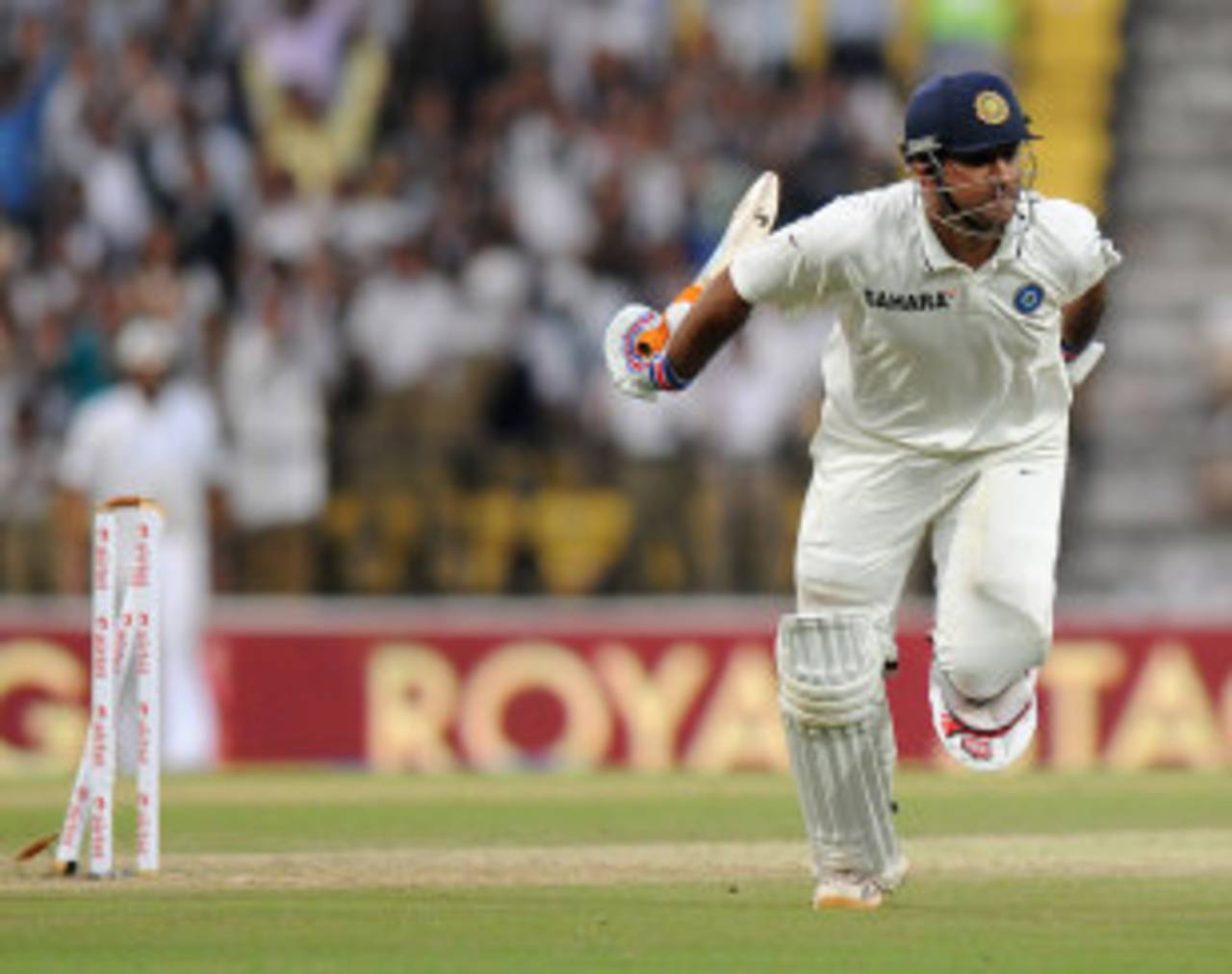From fitness to fielding...how England won in India
Few gave England hope after defeat in Ahmedabad, but a few weeks later they left with a famous series victory. There were a few key reasons why they came out on top
Andrew McGlashan
17-Dec-2012

MS Dhoni was run out for 99, one example of England's superior fielding • BCCI
Dhoni's pitch plea
The events in Nagpur, where a dead pitch led to a largely forgettable contest, showed how this series could have gone. After going 1-0 up, the call could have been for flat, low, slow surfaces and India aiming to keep what they had. Instead, MS Dhoni was strongly critical of the Ahmedabad surface so in Mumbai the teams were greeted by a pitch that spun from the start and, crucially, had bounce. Those two factors brought England back into contention but, it was assumed, would also suit the home side. This is where the move backfired. England's spinners were better than India's and they also had two batsmen score hundreds. India really were beaten at their own game. Kolkata also had help for the bowlers, this time quicks as well as spinners, and again Dhoni did not have the quality of bowling to make the most of it. Alastair Cook did.
Flexible thinking
It was blatantly obvious within a very short period of time that Monty Panesar's omission in the first Test was a huge error. Andy Flower later admitted so. Therefore it was a no-brainer that he would be recalled for Mumbai. However, not all England's selection decisions were so cut-and-dried. Stuart Broad was clearly struggling in the first two Tests, but to drop your vice-captain, and a player hugely valued within team, is not an easy decision. But it was spot on. Steven Finn, in his only appearance of the series, took four wickets in Kolkata and showed again what a bright future he has so long as he can stay fit. The boldest call, though, was still to come. A few hours before the final Test started rumours began circulating that a new No. 6 was going to play. Jonny Bairstow? Nope. Eoin Morgan? Nope. It was a debut for Joe Root, by trade an opener for Yorkshire, who had impressed Graham Thorpe and Andy Flower during the tour. He walked in with the score 119 for 4 and a series on the line. His response was an innings way beyond his years as he made 73 off 229 balls. It had a two-fold effect by eating up time and giving England a workable total. The England system, and the selectors, were shown in a very good light.
Fit for purpose
There will be some tired bodies flying home for Christmas, but crucially fatigue never played a part on the field. The way England kept going, often having key successes late in a day, was a credit to all the off-field work that goes in by the large backroom staff the team now carries around. Most notably this occurred in Nagpur, when a late burst of wickets meant India were not able to bat deep into the fourth day and build a lead. James Anderson typified England's fitness, coming in for spell after spell as part of a two-man (and occasionally one-man) pace attack, but Cook's stamina was also incredible.
In the field
Cricket is a three dimensional game and it has long been accepted that the old-school India players are not too keen on the third part - fielding. Plain old hard work can make a team better, but if anything India got worse. England were miles ahead. They produced three crucial run outs; the team work, led by the often derided Samit Patel, to remove Virender Sehwag after a brisk start on Kolkata; Bell's direct hit to shift the in-form Cheteshwar Pujara in the same Test and then Cook's direct hit to remove Dhoni in Nagpur. Coaches often talk about the fielders taking a wicket and this was reward for the hours of training done between Tests and before play. The catching, a significant problem in 2012, also improved after a poor start in Ahmedabad.
Digging in
After a horror first innings, bundled out for 191 on a largely blameless pitch, Cook showed his team-mates that run-scoring was possible in India with some hard graft. They heeded the lesson. Nick Compton's first tour was not prolific, but he and Cook ensured the middle order was not regularly exposed early. England accepted that a run-rate of three-an-over would often be the summit of their ambitions, but knew the value of keeping India in the field for hours on end. Of course, Kevin Pietersen's 186 in Mumbai was a glorious, thrilling exception but it was an innings that could only be played by a unique, and perhaps great, player. He was the only England specialist batsman to have a strike-rate over 50. Most of the time it was head down and dig in. The series finished on such a note, with Jonathan Trott and Ian Bell refusing to yield, facing a combined 616 balls between them.
Andrew McGlashan is an assistant editor at ESPNcricinfo